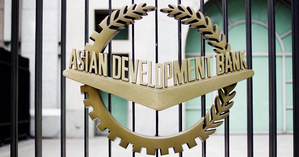Islamabad: Pakistan’s population and urbanisation challenges are increasing, necessitating a new urbanisation model, the Asian Development Bank (ADB) said in a report.
Pakistan’s annual growth in urban population is nearly double that of the rural population, the ADB said in its recent report titled “Pakistan National Urban Assessment: Pivoting toward Sustainable Urbanisation.”
Despite moderating in 2020 and 2021, the population growth averaged 2.55 per cent annually from 2017 to 2023, the report said.
This brought Pakistan’s total population in 2023 to 241.5 million (16.3 per cent more than in 2017), with an urban population of 93.8 million (a nearly fourfold increase since 1981).
The pressure on cities, already burdened by escalating deficits in urban infrastructure and services, is expected to intensify. The urban population is projected to climb to 99.4 million, or 40.7 per cent of the country’s total, in 2030, said the report.
The ADB suggested that provincial governments must bridge the gap between local government acts and their implementation while emphasizing the need for forward-looking urban planning.
The ADB report says overarching land use and master planning frameworks in Pakistan should prioritise increased vertical mixed-use developments and pedestrian-friendly urban areas. They should foster the creation of public and community spaces while also accommodating a broad range of commercial, cultural, environmental, and educational urban activities.
They should also incentivise investments in high-rise, inner-city regeneration projects or the vertical redevelopment of informal settlements, reinforced with policies for property developers to invest in affordable housing, energy efficiency, and green spaces.
Housing in cities has not kept pace with rapid urban population growth, while the average annual supply of 150,000 new urban housing units falls well short of the demand for 350,000 new housing units per year. This deficit of nearly 10 million housing units in 2018 has led to 57 per cent of urban residents living in informal settlements.
The typically overcrowded and squalid conditions for those in informal settlements contrast sharply with those in the new, single-family housing schemes in suburban areas and the exclusive, gated communities in the city centres.
–IANS


Comments are closed.